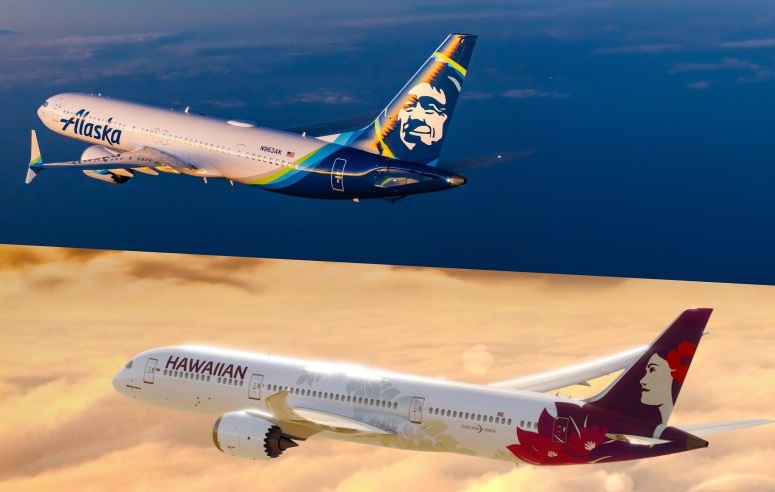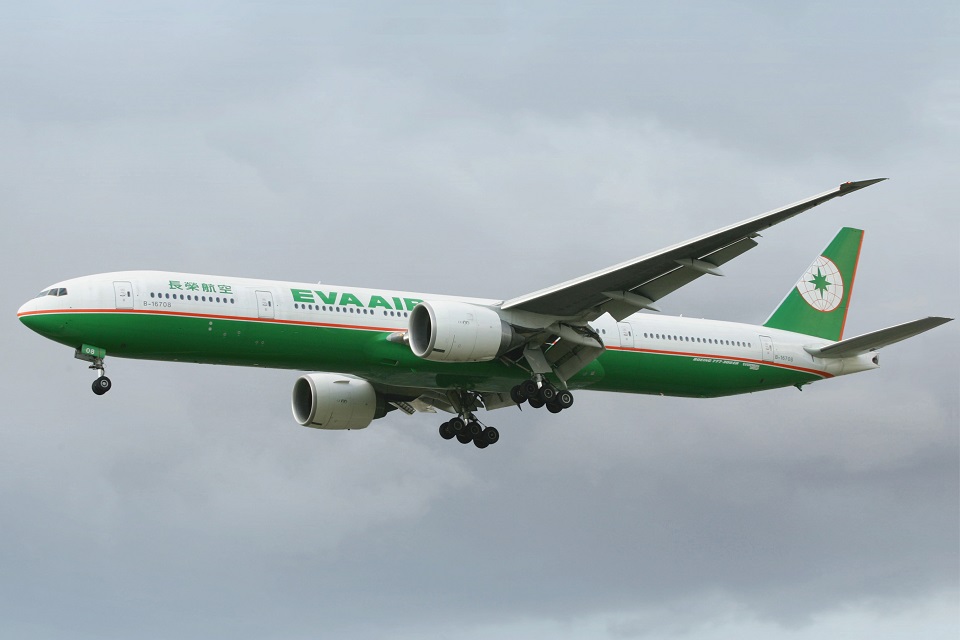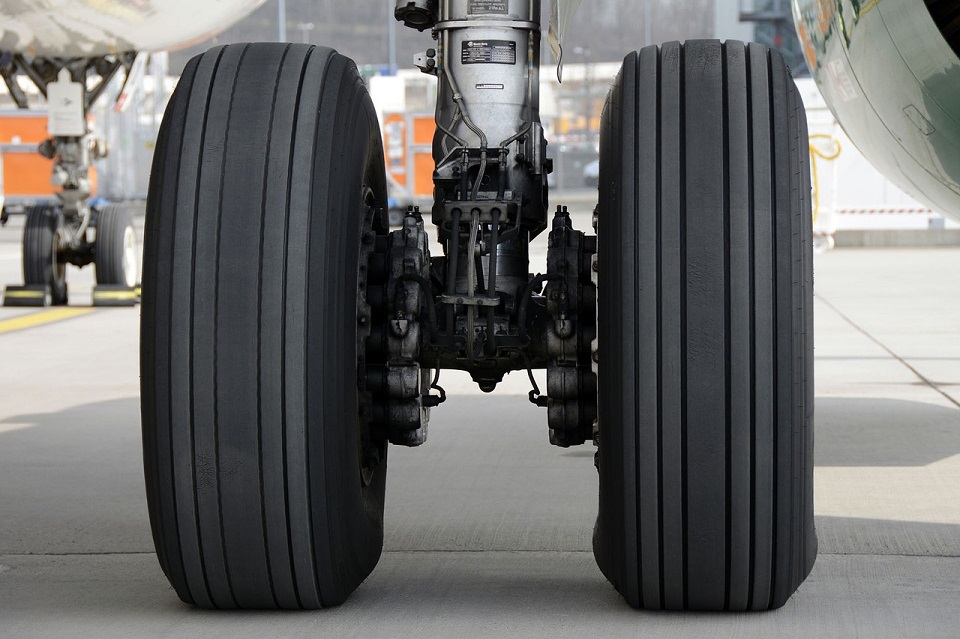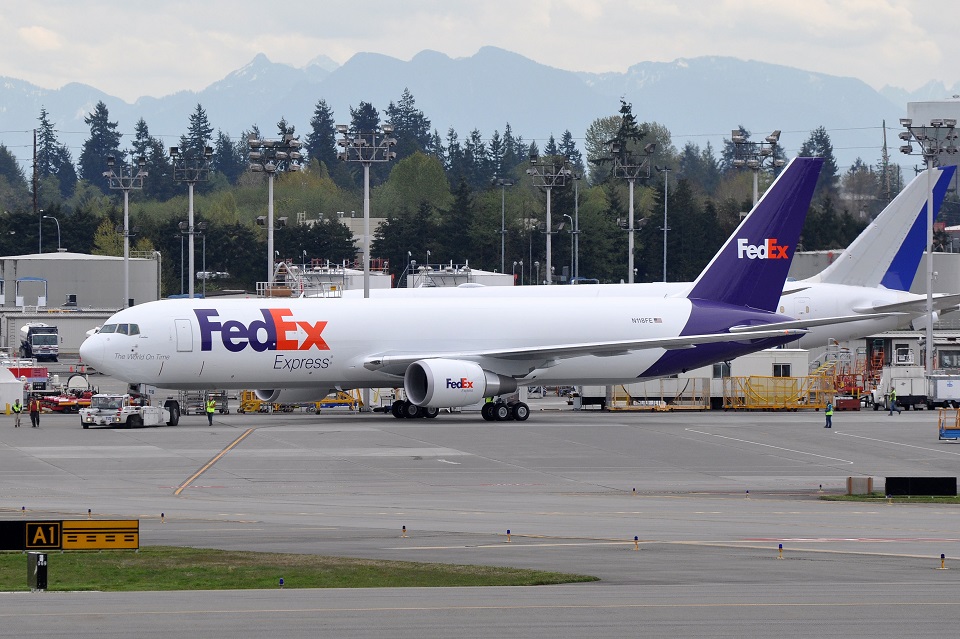Airlines
Alaska Airlines Acquisition of Hawaiian Airlines Reshapes the Air Travel Landscape

Alaska Air Group, Inc. (NYSE: ALK) and Hawaiian Holdings, Inc. (NASDAQ: HA) jointly announced today the execution of a definitive agreement, signifying Alaska Airlines’ acquisition of Hawaiian Airlines at a cash price of $18.00 per share. The total transaction value stands at approximately $1.9 billion, encompassing Hawaiian Airlines’ net debt of $0.9 billion.
The combination of complementary domestic, international, and cargo networks
This strategic union is poised to open up an array of additional destinations, providing consumers with increased choices in crucial air service options across the Pacific region, Continental United States, and globally.
The transaction is anticipated to establish a robust platform for growth and competition in the U.S., offering enduring employment opportunities, ongoing community investments, and a commitment to environmental stewardship.
Key Points:
- Acquisition Overview:
- Fleet Expansion and Network Reach:
- Creates the fifth-largest U.S. airline with a fleet of 365 narrow and wide-body airplanes.
- Enables access to 138 destinations through combined networks and over 1,200 destinations via the oneworld Alliance.
- Hub Development and Connectivity:
- Honolulu to become a key hub for the combined airline, offering expanded services to the Continental U.S., Asia, and the Pacific.
- Tripling the number of destinations from Hawai‘i to North America, while maintaining robust Neighbor Island service.
- Commitment to Hawai‘i:
- Strong commitment to Hawai‘i, ensuring robust Neighbor Island air service.
- Aiming for a more competitive platform supporting growth, job opportunities, community investment, and environmental stewardship.
- Employee and Union Commitment:
- Commitment to maintaining and growing the union-represented workforce in Hawai‘i.
- Immediate value creation with at least $235 million of expected run-rate synergies.
- Investor Call and Timeline:
- Investor conference call scheduled for today at 5:00 p.m. ET / 2:00 p.m. PT / 12:00 p.m. HT.
- Anticipated closing of the transaction within 12-18 months.
- Strategic and Financial Rationale:
- Complementary networks to enhance competition and provide greater choice for consumers.
- Preservation of both Alaska and Hawaiian Airlines’ brands on a single operating platform.
- Expected to deliver high single-digit earnings accretion for Alaska Airlines within the first two years.
- Community and Sustainability Commitment:
- Focus on growth in union-represented jobs and strong operational presence in Hawai‘i.
- Commitment to environmental stewardship, aligning with Alaska Airlines’ five-part path to net zero by 2040.
- Synergies and Accretion:
- Expected run-rate synergies of at least $235 million.
- Transaction multiple of 0.7 times revenue, approximately one third the average of recent airline transactions.
- Conditions to Close:
- Approval by regulatory authorities and Hawaiian Holdings, Inc. shareholders.
- Expected to close in 12-18 months, with the combined organization based in Seattle under the leadership of Alaska Airlines CEO Ben Minicucci.

Airlines
Mid-Flight Chaos: Eva Air Flight Attendants Praised for Halting Brawl Over Seat Dispute

In a remarkable display of bravery and quick thinking, three female flight attendants from Eva Air have been lauded as heroes after diffusing a tense altercation between two male passengers aboard a flight from Taiwan to San Francisco.
The incident unfolded onboard EVA Air flight BR8 on May 7, just hours into the 11½-hour journey from Taiwan Taoyuan International Airport to San Francisco International Airport.
Reports suggest that the confrontation erupted over a seat dispute when one passenger sought to switch seats due to concerns over a neighbor’s coughing. In the ensuing chaos, the passenger who attempted to claim the seat was met with resistance from its original occupant, leading to a physical altercation.
Witnesses on the flight described a scene of escalating tension as one passenger attempted to strike the other, prompting the swift intervention of the cabin crew. Video footage shared on social media captured the moment when the flight attendants courageously stepped in to separate the brawling passengers, with one attendant holding back the assailant while others intervened to prevent further escalation.
Passenger Alex Pierce, who captured the incident on video, expressed his concern for the safety of the flight attendants amidst the chaos. Despite the volatile situation, the Eva Air crew remained composed and acted decisively to restore order on the aircraft.
Following the intervention of the flight attendants, the two unruly passengers were handed over to US law enforcement upon the flight’s arrival in California. Eva Air reiterated its zero-tolerance policy towards disruptive behavior and commended the crew for their exemplary response to the incident.
Airlines
Why do airplane tires cause smoke at touchdown?

When an aircraft touches down during landing, the appearance of smoke is a common sight. This occurrence arises from a combination of factors related to the landing procedure and the characteristics of the tires themselves.
As the aircraft descends and prepares for touchdown, the tires are stationary. Upon contact with the ground, they rapidly accelerate from a standstill to an average speed of 240 to 260 km/h. This sudden burst of motion creates friction between the tires and the runway surface, resulting in the emission of smoke.
The smoke stems from the considerable heat generated by the friction between the rubber tires and the asphalt runway. This heat is sufficient to cause the rubber to almost vaporize, resembling the smoke produced when a bike tire skids against the road.
Several variables influence the intensity and occurrence of smoke during landings. The frequency of landings a tire experiences within a specific timeframe, such as within 24 hours, impacts its level of wear and tear. Airlines rigorously inspect tire conditions before each flight, promptly replacing them if any damage or signs of deterioration are detected to uphold safety standards.
The design and resilience of aircraft tires are influenced by the type of aircraft and its operational demands. For example, the tires used on an Airbus A330-200 differ in composition and load capacity compared to those designed for conventional automobiles. Furthermore, environmental factors such as runway temperatures and altitude variations contribute to tire performance.
Aircraft tires are meticulously engineered to endure the demanding conditions of takeoff and landing. They incorporate multiple layers of nylon for reinforcement and a wire core to prevent slippage on the rim. Moreover, these tires are filled with nitrogen, offering superior properties compared to conventional compressed air for aviation purposes.
Airlines
FedEx B767 Freighter Aircraft Lands in Istanbul Without Nose Gear

A FedEx cargo Boeing 767-300F, bearing registration N110FE, faced a tense situation as it embarked on what should have been a routine journey from Paris’s Charles de Gaulle Airport to Istanbul.
However, mid-flight, the pilots discovered a malfunction in the front landing gear, setting off a chain of events that culminated in a dramatic emergency landing at Istanbul Airport on 8th May.
According to reports from the state-run Anadolu Agency, the crew onboard Flight FX6238 promptly alerted authorities at Istanbul Airport upon realizing the landing gear failure. With nerves of steel, they maneuvered the aircraft under the guidance of the control tower, navigating the challenge of landing without the crucial support of the front landing gear.
As the FedEx plane descended toward the runway, onlookers, and social media users witnessed a nerve-wracking sight: the aircraft relying solely on its back landing gear, gently touching its nose to the tarmac in a controlled landing.
In response to the emergency, airport rescue and fire fighting teams sprang into action, ready to respond to any potential disaster. Fortunately, their services were not required as the skilled piloting and swift coordination ensured the safety of all onboard. Despite the intensity of the situation, there were no reported injuries among the passengers or crew.
The incident prompted the temporary closure of runway 16R at Istanbul Airport, but the quick action of authorities ensured that flight operations continued smoothly on other runways. Istanbul Governor Davut Gul reassured the public of the airport’s robust infrastructure and emergency response capabilities, emphasizing that such incidents are managed effectively to minimize disruptions.
Still, questions concerning Boeing aircraft quality control have been raised once again in light of the emergency landing. This event adds to the ongoing criticism of Boeing’s safety measures in light of the recent controversies concerning the company’s manufacturing operations.
























